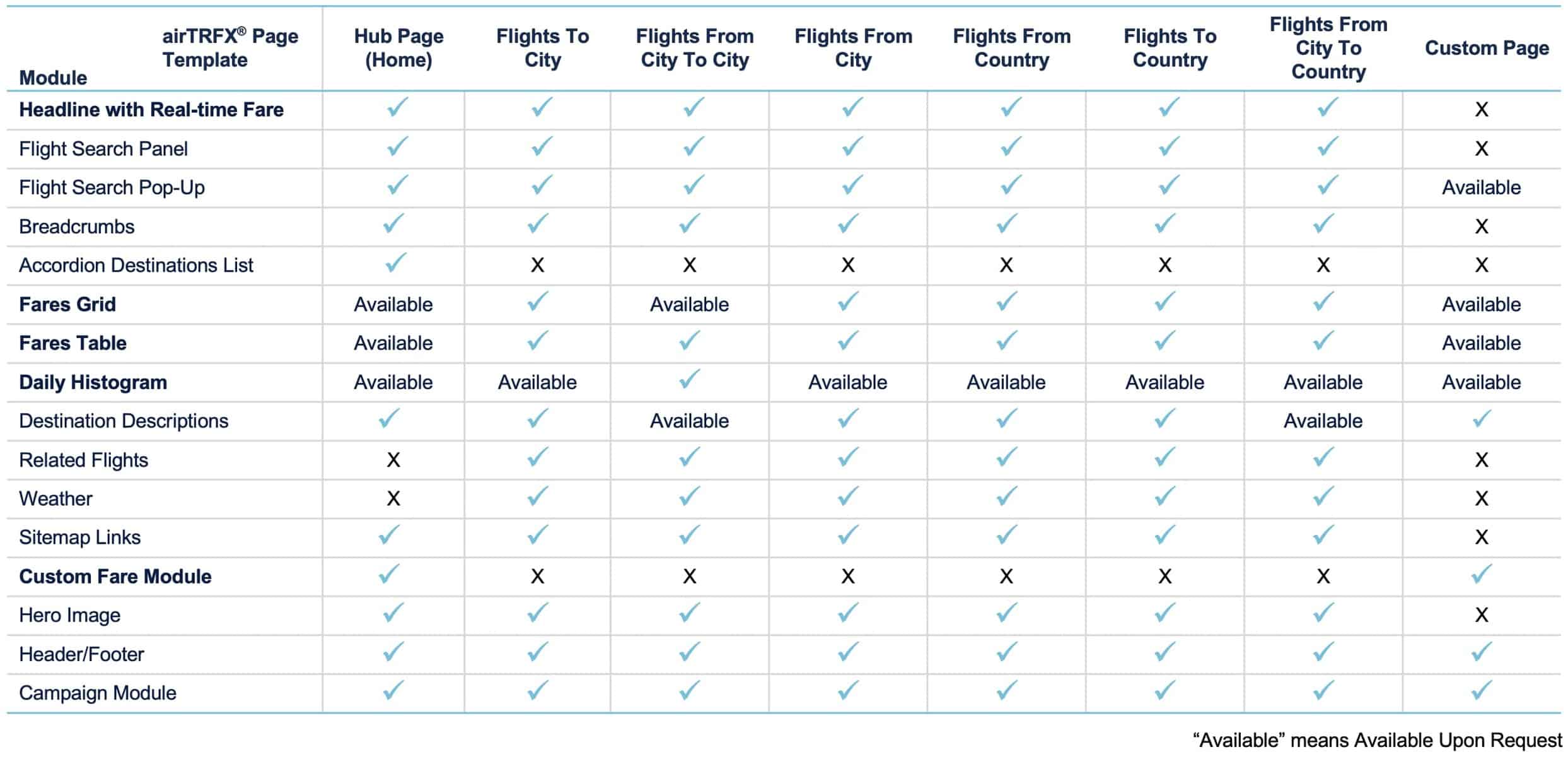airTRFX: Buy vs. Build
airTRFX helps airlines’ acquisition teams by reducing resource dedication to the building, hosting, maintenance, and enhancement of their Fare Marketing technology toolkit. EveryMundo provides these services and capabilities to each of our airline customers. Replicating the airTRFX system and airModules products through in-house development and improvement entails costly airline IT/Digital projects.
There is no direct competitor to airTRFX currently in the market, so any alternative solution will need to be created in-house by the airline. airTRFX can be loosely defined as an “airline-specific performance CMS”; therefore, if a competitive landscape must be defined, it is Enterprise CMS. Among our airline customers, the most popular enterprise CMS’s are Adobe Experience Manager, Sitecore Experience Platform, and SDL Tridion DX. These alternative CMS’s can be customized to execute pages and content in ways similar to that delivered via airTRFX.
However, using these CMS options would require major technical customization, considerable internal IT resource participation, development/purchase of a comprehensive fare cache solution, build-out of a library of user experiences, web development consulting, and SEO consulting.
Comparing airTRFX vs. In-House Solutions for key features:
airTRFX
vs.
Building In-House
IT + CMS + Fare Cache + Consultants
Hosting
- Fully scalable with no limits on pages/routes.
- Cloud-based, load-balanced, locally served for maximum page performance.
- Constant enhancements and upgrades to system.
- Internal IT required to launch and maintain large-scale infrastructure not typical for an airline website.
- Requires constant observation, maintenance and rising professional services costs
Marketing Agility
- Built-in content management and page creation without IT.
- Marketers able to add real-time pricing widgets technical functionality and customize pages in bulk or individually.
- Pre-built, airline-specific front-end fare visualization modules
- Industry agnostic systems which require integration into the aviation industry.
- Any enhanced functionality requires IT resource planning, approval and costing.
- System likely to be inherently rigid and not prone to frequent customization.
Performance Focus
- Continuous feature improvements (new airModules, business intelligence dashboards, etc.) based on insights from 70+ customers worldwide
- No ability to compare performance with other airlines.
- Airline must focus on supporting numerous daily challenges and issues through a static system needing resources to improve.
SEO Maintenance
- Ongoing SEO performance enhancement
- SEO visibility and best practices aggregated from customers globally
- SEO experts must work with IT (both in-house + outsourced) to ensure adherence to SEO technical best practices
- Support resourcing must compete with overall technical prioritization / sprints.
IT Resources Certainty
- Specific, limited IT involvement only during implementation.
- Ongoing hosting, maintenance, support included.
- Competing with all other internal projects for technical resources.
- Professional services costs very difficult to forecast.
Launch Certainty
- Rapid deployment (<4 months) of a turn-key system built and evolved from 70+ implementations.
- In-house systems often require ~12 months for a hacked solution that requires constant retro-fitting.
- If/when one partner changes, the result is unforeseen modification costs.
Cost Certainty
- No technical integration with existing airline technology
- IBE Fare Collection technology deployed via tag management system
- Need to integrate fare cache solution into endpoints to deliver fare information
- Integration requires ongoing testing and optimization to control costs
Integrations
- Fixed, predictable cost
- Iincludes IT support, strategic guidance and advice and best practices
- Unpredictable costs to build, maintain, modify, fix issues, especially in dynamic resourcing environment.
airTRFX Standard Pages with Default Modules Configuration

